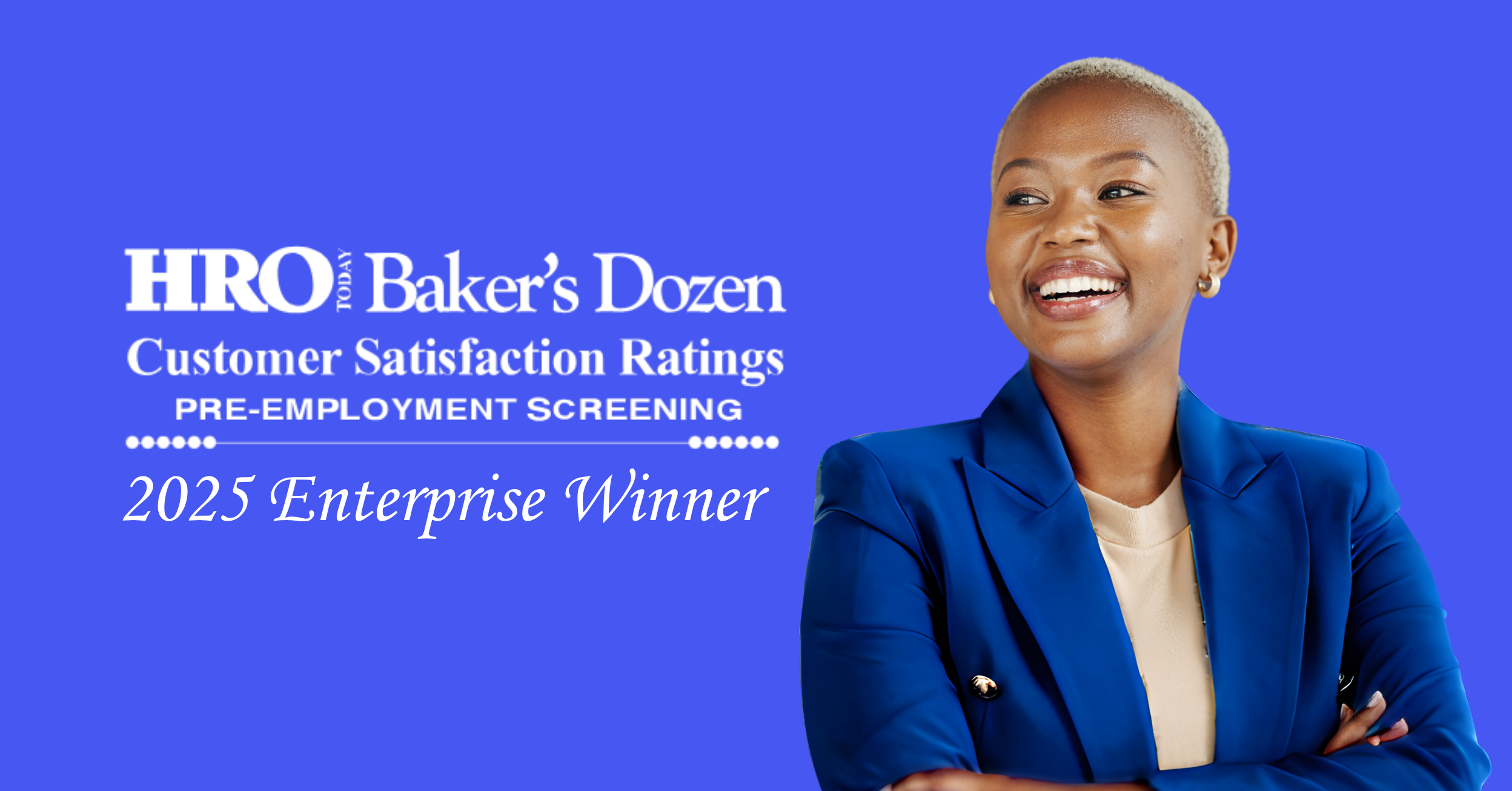Verified Credentials Makes HRO Today Baker’s Dozen List for the Fourth Year in a Row
We’re proud to share the news that Verified Credentials has been recognized in the 2025 HRO Today Baker’s Dozen Customer Satisfaction Ratings as a...
With Verified Credentials' mobile-first candidate experience, you meet candidates where it's most convenient. Learn how easy we make it.
|
|
Now offering DOT services!Get your drivers on the road quickly and meet DOT regulations. |
Gain clarity about your compliance responsibilities with our new Adverse Action Guide! Use the interactive map to learn what regulations apply in your area.
Verified Credentials is a leading background screening company. Since 1984, we’ve helped validate and secure relationships through the use of our comprehensive screening solutions. We offer a wide variety of background checks, verifications, and innovative screening tools.

Our accreditation confirms that our policies, processes, and employee training meet rigorous industry compliance standards.
3 min read
Verified Credentials Aug 12, 2020 12:00:00 AM

The information reported from a background check – and how it is found – is not always obvious. Numerous settings define how far and wide different background checks search. Those elements offer a path to the specific data you need. How you use these elements can result in a superficial scan of relevant records, or a more comprehensive look into a candidate’s history. There is widespread confusion about how exactly to identify where the scope of a background check can be audited and better defined for an improved background check. A commonly used problem-solving tool can provide a great roadmap to see where to manage search scope.
A helpful way to break down the search scope is by using four of the Five Ws: who, what, where, and when. These four Ws make up a background check’s scope:
In this article, we will look at what trends we see when employers consider the scope of their background checks. Let’s explore how the four Ws impact what they find.
WHO: Additional names and aliases for the subject of a background report. Useful for multiple searches, including multiple criminal searches, registries, and more.
“What’s in a name?” Well, in background checks, a name can make a big difference. It’s probably no surprise that the names you search in a background check play a considerable role in the results. Most employers begin their searches with the names provided by the candidate. Verified Credentials research shows this is typically about one name per candidate. You must be thinking, “That can’t be right!” And you’re not wrong.
With maiden names and other name variables at play, a candidate could undoubtedly have another alias. Some organizations find it helpful to complete an Address History Trace to uncover additional names to search. According to Verified Credentials research, an Address History Trace reveals an additional relevant name for over half of candidates.
WHAT: What individual sources of information are you searching. Sources can include:
The importance of this one might be even more evident than the candidate’s name. From criminal history to job experience to driving records. There is no one-size-fits-all background check. Instead, employers must decide what background checks and verifications they use. We see 87% of organizations use package structures to make the screening process consistent and straightforward. Work closely with your legal counsel to determine what searches you may need or want to include.
WHERE: Search areas and jurisdictions of information sources. Some searches are segmented by location and need to be defined to access records at some courthouses, agencies, registries, and more.
Have you always lived in the same place? If you have, you’re the outlier. The U.S. Census Bureau calculates that the average person in the United States moves over 11 times. As each of us travels through life, we compile a history at the location we reside, work, and visit. This complicates how you decide which places to search in your background checks.
Like other scope factors, most employers begin with the locations candidates provide. But some expand that. According to a Verified Credentials report, 23.66% of employers automatically search for and use an expanded location scope. An Address History Trace search to potentially identify additional addresses. They can then add county criminal searches based on those results. On average, this adds searches in 2.6 counties.
WHEN: The length of a candidate’s available and reportable history may vary.
Generally, most of how far back a background check searches depends on laws and information sources. They define what can be accessed and what can be reported for a background check for employment purposes. However, the scope of how employers look at verifications of work and school experience can be up to you and your candidates.
Job seekers take a variety of approaches to how much of their work history they provide. Three years, fifteen, or complete history of past employers might appear on their resume or job application. What you want to check and what candidates provide can differ. Our research shows that candidates submit 1.85 past employers on average. You also may determine how much employment history is appropriate and allowable for your background check report.
Rather than defined parameters, how much work history you verify could depend on what the candidate shares with you. Most organizations we work with do not require a minimum number of employers or years in a candidate’s employment history. However, according to our research, close to 10% of organizations specify the number of years they want to confirm.
Much like employment history, you’re likely to begin academic history verifications on what information the candidate provides. There’s no way for employers to know where a candidate attended school without them divulging the information. A candidate’s education may be just as important as their work experience, but most employers choose to search for a limited timeframe. Instead of attempting to verify a candidate’s full academic history, 96% look into the highest degree or diploma obtained.
We see organizations using a variety of scope configurations in their background checks. Every situation is unique and takes thought to be well-aligned with your goals. Think about how you apply each W to your background check story. Understanding how it impacts your background check results is key to making informed decisions about how you screen.
Many organizations have questions about how to keep their scope current and what tools are available to make it as comprehensive as possible. Speak with our team to discuss what you are currently searching and learn about potential ways to expand your search scope.
Schedule a consultation to learn how Verified Credentials leverages all aspects of scope for background checks.

We’re proud to share the news that Verified Credentials has been recognized in the 2025 HRO Today Baker’s Dozen Customer Satisfaction Ratings as a...

Our mission has always been clear: uphold the highest ethical standards in every screening we conduct while continually finding new ways to deliver...

Preparing students for clinical placement is no small task. From tracking immunizations and background checks to managing communication between...

The weather is warm, the flowers are in bloom, and the sun is shining. The return of summer means wedding season is upon us once again. For family...
When you look at activities in your life it’s pretty clear when something is working. You know your washer and dryer are doing its job when your...

Same as it ever was… It’s amazing how easy it is to overlook screening packages, often kept at status quo year after year. We surveyed HR...